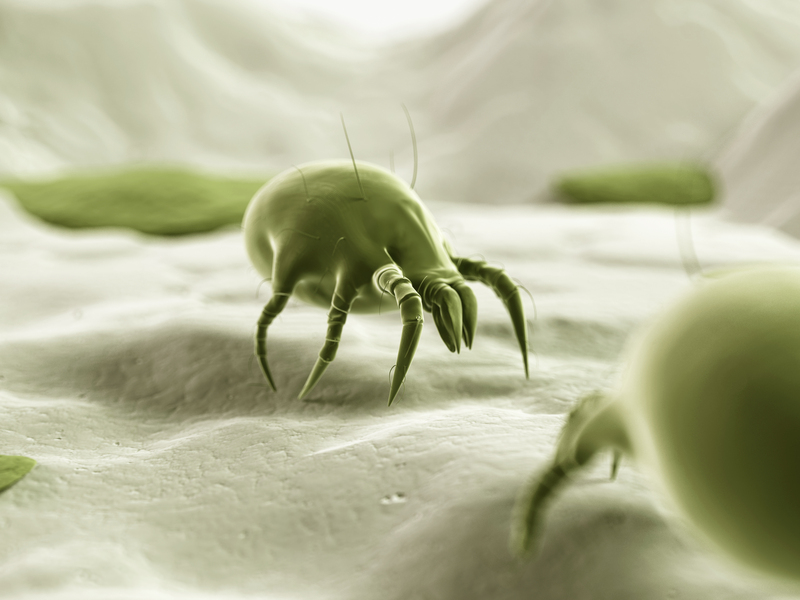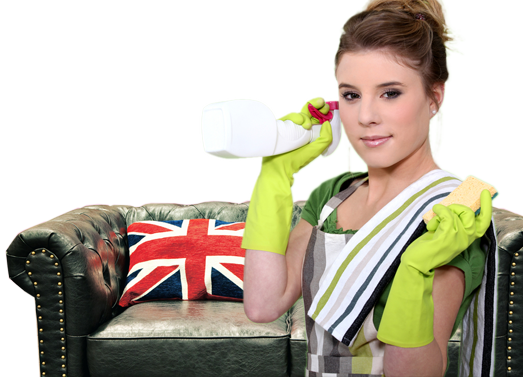Effective Ways to Eliminate Damp Odors
Posted on 31/08/2025
Effective Ways to Eliminate Damp Odors
Unpleasant damp odors aren't just annoying--they can also point to underlying moisture or mold problems that might affect your health and the integrity of your home. If you're battling persistent musty or damp odors, you're not alone. Many households face this issue, especially in areas with high humidity or poor ventilation. Fortunately, eliminating damp odors is possible with a combination of preventative measures and proven cleaning strategies.

What Causes Damp Odors?
Before you can banish those unwelcome smells, it's essential to understand what causes damp odors in the first place. This knowledge empowers you to target the problem at its root, ensuring more permanent results.
- Moisture buildup: Moisture accumulates from leaks, spills, or high humidity, creating a perfect breeding ground for odor-causing bacteria and mold.
- Poor ventilation: Inadequate airflow traps moisture indoors, increasing the risk of mold, mildew, and damp smells.
- Organic material: Dust, fabrics, carpets, and wood can all absorb moisture and quickly begin to harbor musty smells.
- Mold and mildew: When moisture lingers, mold and mildew spores flourish and release distinct, offensive odors.
Quick Overview: How to Get Rid of Damp Odors
To treat and remove damp odors for good, you'll need to take a multi-pronged approach:
- Identify and eliminate sources of moisture
- Increase ventilation where possible
- Use absorbers and air purifiers to neutralize odors
- Deep clean affected areas and use appropriate antimicrobial solutions
- Prevent future moisture problems with regular maintenance
Step-by-Step Guide to Eliminate Damp Odors
1. Identify the Source of the Dampness
The first and most important step in eliminating damp odors is discovering their source. Dampness can originate from:
- Leaking pipes or roofs
- Cracks in foundation walls or windows
- Condensation on walls or floors
- Blocked gutters or drainage systems
- Flooding or spills that weren't properly cleaned up
Inspect all likely areas, specifically basements, bathrooms, kitchens, closets, and behind appliances. If necessary, use a damp meter to check for hidden moisture in walls, floors, or furniture.
2. Repair Leaks and Waterproof the Area
After identifying the problem, act fast to repair any leaks. Fix dripping taps, cracked tiles, leaky roofs, or faulty seals on windows and doors. Apply waterproof paint or sealant in problem zones to prevent further moisture intrusion.
3. Improve Air Circulation
Poor ventilation is a common cause of musty or stale odors. To boost air flow:
- Open windows and doors regularly (even briefly, in winter)
- Use fans to promote air exchange
- Install air vents in key areas like kitchens and bathrooms
- Keep furniture away from walls to allow air movement
4. Control Humidity
Maintaining the right humidity is crucial in eliminating musty damp odors. Ideal indoor humidity is between 30% and 50%. Use these tips:
- Invest in a dehumidifier--especially helpful for basements, bathrooms, or laundry rooms
- Run exhaust fans while cooking, showering, or drying clothes indoors
- Monitor humidity levels using a hygrometer
- Avoid drying clothes indoors, which releases moisture into the air
5. Deep Clean All Affected Surfaces
Once excess moisture is controlled, it's time for a thorough cleaning. Musty damp odors often cling to surfaces, fabrics, and carpets. Here's how to deep cleanse every area:
- Hard surfaces: Wash walls, floors, tiles, and baseboards with a mild solution of water and distilled white vinegar or a small amount of bleach solution (always test first and ensure room ventilation).
- Upholstery and carpets: Sprinkle with baking soda and let sit for several hours before vacuuming. Alternatively, use a carpet cleaner designed for mold and odors.
- Fabrics and curtains: Wash on a hot cycle with vinegar or a cup of baking soda.
- Mattresses: Vacuum well and use an antibacterial spray suitable for fabrics.
Don't forget often-missed spots like closets, cupboards, behind appliances, and under sinks--anywhere moisture could collect.
6. Remove and Replace Severely Affected Materials
Sometimes, no amount of cleaning will eradicate stubborn damp odors--particularly if mold has penetrated porous materials. You may need to remove and replace items such as:
- Old carpets or underlay
- Water-damaged drywall or insulation
- Rotting wood or furnishings
- Heavily stained ceiling tiles
If you suspect a larger mold problem or extensive water damage, consult a professional remediation service to ensure safe and thorough treatment.
7. Use Air Purifiers and Absorbers
For ongoing odor control, consider:
- HEPA air purifiers to capture airborne spores and odors
- Activated charcoal bags or odor absorbers in closets, shoes, or cars
- Baking soda containers in cupboards or the fridge to soak up smells
- Essential oils diffusers for a fresh aroma (lavender, tea tree, or eucalyptus have natural antimicrobial properties)
8. Natural Remedies for Musty Odors
If you prefer chemical-free options to eliminate damp smells, try these:
- Leave bowl of vinegar in the room overnight to neutralize odors
- Set out coffee grounds in small cups--they absorb and mask smells
- Place citrus peels in corners for a fresh zing and odor reduction
- Use salt in small containers; it absorbs moisture and reduces smell
9. Maintain a Clean and Dry Environment
Prevention is the best cure for damp and musty odors. Maintain a clean and dry environment by:
- Cleaning regularly, especially in vulnerable areas like bathrooms, kitchens, and basements
- Checking for leaks or water stains periodically
- Storing items off the floor in garages or basements
- Using moisture-absorbing products like silica gel in closets and storage areas
Special Focus: Specific Home Areas with Damp Odor Issues
Eliminating Damp Smells in the Bathroom
Bathrooms are especially prone to moisture and musty odors due to frequent water use. Ensure:
- Exhaust fans are clean and functioning
- Grout and seals are intact--repair as needed
- Towels and bath mats are dried thoroughly
Consider using a bathroom-specific air purifier or placing a dish of baking soda behind the toilet.
Getting Rid of Damp Odors in Basements
Basements are notorious for persistent damp smells. Combat this by:
- Running a dehumidifier year-round
- Keeping the space tidy and decluttered to encourage airflow
- Applying antifungal paint to walls and floors
- Installing vapor barriers if needed
Set up charcoal bags or air purifiers for an extra layer of odor neutralization.
Removing Damp Odors from Carpets and Furnishings
- Shampoo carpets annually
- Sun-dry rugs and cushions for natural deodorizing
- Add area rugs with moisture-resistant backing in high-risk areas
Pro-tip: Place silica gel sachets under sofa cushions to keep them fresher longer.
How to Prevent Damp Odors Long-Term
Once you've managed to eliminate damp odors, keeping them away is key. Adopting some good habits can make all the difference:
- Run a dehumidifier or ventilation fan daily in problem zones
- Fix plumbing leaks quickly; inspect washers, seals, and connections regularly
- Wash fabrics, towels, and bedding weekly
- Leave closet doors open occasionally to prevent stale air
- Keep books, clothes, and papers out of humid basements and attics

When to Call a Professional for Damp Odor Removal
If the musty smell persists despite your best efforts, you may be dealing with deeper problems like black mold, rotten timber, or hidden leaks. Signs you may need expert help include:
- Visible patches of black, green, or white mold
- Frequent or worsening respiratory symptoms (e.g., asthma, allergies)
- Odors that intensify, even after cleaning and drying
- Damage to structure (warped wood, ceiling sagging, cracking walls)
In such cases, consult a certified mold remediation specialist or building inspector.
Conclusion: Say Goodbye to Damp Odors for Good
Banishing damp odors involves more than just masking unpleasant smells--it means targeting and eliminating the root causes of moisture. By taking a comprehensive, proactive approach--fixing leaks, enhancing ventilation, controlling humidity, deep cleaning, and using the right odor absorbers--you'll enjoy a fresher, healthier living environment.
Whether you're looking to remove musty smells from a single room, a closet, or your entire house, following these effective ways to eliminate damp odors will ensure long-lasting results. Make these tips part of your regular cleaning and home maintenance routine, and say goodbye to damp smells, for good!





